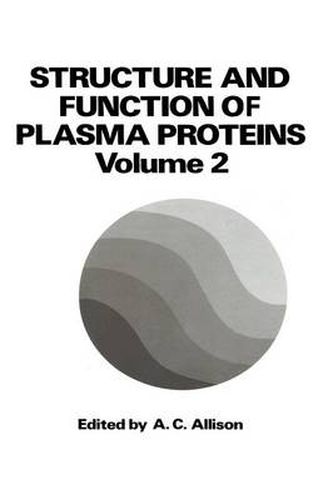Readings Newsletter
Become a Readings Member to make your shopping experience even easier.
Sign in or sign up for free!
You’re not far away from qualifying for FREE standard shipping within Australia
You’ve qualified for FREE standard shipping within Australia
The cart is loading…






This title is printed to order. This book may have been self-published. If so, we cannot guarantee the quality of the content. In the main most books will have gone through the editing process however some may not. We therefore suggest that you be aware of this before ordering this book. If in doubt check either the author or publisher’s details as we are unable to accept any returns unless they are faulty. Please contact us if you have any questions.
Plasma proteins are of interest from many points of view. Biochemists have separated and purified numerous plasma proteins and studied their physical properties, amino acid composition and sequence, the carbohydrate com- ponents of some, and binding of metals, hormones, and other materials. Much work has also been carried out on the synthesis, rates of turnoverr, and degradation of plasma proteins. Many plasma proteins show inherited variations, some of which (e.g., those of heptoglobins and transferrins) are common in various human popu- lations while others (e.g., absence of lipoproteins or immunoglobins) are rare but important because of their association with clinical syndromes. Since blood is the most accessible bodily constituent, geneticists have made good use of serum protein differences as genetic markers in family and popula- tion studies. Physiologists have long been interested in plasma proteins in relation to colloid osmotic pressure; transport of lipids, iron, hormones, and other ma- terials; the activities of renal glomeruli and tubules; the function of the liver, and many other bodily activities. Plasma proteins are also widely studied in relation to malnutrition and undernutrition, particularly that associated with defective intake of protein.
$9.00 standard shipping within Australia
FREE standard shipping within Australia for orders over $100.00
Express & International shipping calculated at checkout
This title is printed to order. This book may have been self-published. If so, we cannot guarantee the quality of the content. In the main most books will have gone through the editing process however some may not. We therefore suggest that you be aware of this before ordering this book. If in doubt check either the author or publisher’s details as we are unable to accept any returns unless they are faulty. Please contact us if you have any questions.
Plasma proteins are of interest from many points of view. Biochemists have separated and purified numerous plasma proteins and studied their physical properties, amino acid composition and sequence, the carbohydrate com- ponents of some, and binding of metals, hormones, and other materials. Much work has also been carried out on the synthesis, rates of turnoverr, and degradation of plasma proteins. Many plasma proteins show inherited variations, some of which (e.g., those of heptoglobins and transferrins) are common in various human popu- lations while others (e.g., absence of lipoproteins or immunoglobins) are rare but important because of their association with clinical syndromes. Since blood is the most accessible bodily constituent, geneticists have made good use of serum protein differences as genetic markers in family and popula- tion studies. Physiologists have long been interested in plasma proteins in relation to colloid osmotic pressure; transport of lipids, iron, hormones, and other ma- terials; the activities of renal glomeruli and tubules; the function of the liver, and many other bodily activities. Plasma proteins are also widely studied in relation to malnutrition and undernutrition, particularly that associated with defective intake of protein.